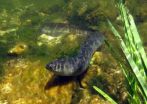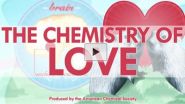(Press-News.org) Scientists have solved a major problem with the current standard model of cosmology identified by combining results from the Planck spacecraft and measurements of gravitational lensing in order to deduce the mass of ghostly sub-atomic particles called neutrinos.
The team, from the universities of Manchester and Nottingham, used observations of the Big Bang and the curvature of space-time to accurately measure the mass of these elementary particles for the first time.
The recent Planck spacecraft observations of the Cosmic Microwave Background (CMB) – the fading glow of the Big Bang – highlighted a discrepancy between these cosmological results and the predictions from other types of observations.
The CMB is the oldest light in the Universe, and its study has allowed scientists to accurately measure cosmological parameters, such as the amount of matter in the Universe and its age. But an inconsistency arises when large-scale structures of the Universe, such as the distribution of galaxies, are observed.
Professor Richard Battye, from The University of Manchester School of Physics and Astronomy, said: "We observe fewer galaxy clusters than we would expect from the Planck results and there is a weaker signal from gravitational lensing of galaxies than the CMB would suggest.
"A possible way of resolving this discrepancy is for neutrinos to have mass. The effect of these massive neutrinos would be to suppress the growth of dense structures that lead to the formation of clusters of galaxies."
Neutrinos interact very weakly with matter and so are extremely hard to study. They were originally thought to be massless but particle physics experiments have shown that neutrinos do indeed have mass and that there are several types, known as flavours by particle physicists. The sum of the masses of these different types has previously been suggested to lie above 0.06 eV (much less than a billionth of the mass of a proton).
In this paper, Professor Battye and co-author Dr Adam Moss, from the University of Nottingham, have combined the data from Planck with gravitational lensing observations in which images of galaxies are warped by the curvature of space-time. They conclude that the current discrepancies can be resolved if massive neutrinos are included in the standard cosmological model. They estimate that the sum of masses of neutrinos is 0.320 +/- 0.081 eV (assuming active neutrinos with three flavours).
Dr Moss said: "If this result is borne out by further analysis, it not only adds significantly to our understanding of the sub-atomic world studied by particle physicists, but it would also be an important extension to the standard model of cosmology which has been developed over the last decade."
The paper is published in Physical Review Letters and has been selected as an Editor's choice.
INFORMATION:
Notes for editors:
A copy of the paper is available from http://arxiv.org/abs/1308.5870 or http://prl.aps.org/abstract/PRL/v112/i5/e051303
Jodrell Bank's role in Planck
This paper makes use of CMB data from the European Space Agency's Planck spacecraft - http://www.esa.int/Our_Activities/Space_Science/Planck - and from the South Pole Telescope - http://pole.uchicago.edu/.
Jodrell Bank Centre for Astrophysics (JBCA - http://www.jodrellbank.manchester.ac.uk/) is directly involved with the two lowest frequencies of the Low Frequency Instrument on board Planck, the 30 and 44 GHz radiometers. These have four and six detectors respectively, operating at 20Kelvin (-253.15°C or -423.67°F). The resolution on the sky is 33 and 27 arc minutes, and the sensitivity 1.6 and 2.4 micro K (over 12 months). The cryogenic low noise amplifiers which are the heart of the radiometers were developed at Jodrell Bank, with help from the National Radio Astronomy Observatory in Virginia, USA.
Dr B Maffei and Dr G Pisano are involved in the other focal instrument, the HFI. First at Cardiff University and now at The University of Manchester, they have played a major role in the design, development and calibration of the Focal Plane Unit, in particular the cold optics, in collaboration with the Institut d'Astrophysique Spatiale, France, Maynooth University, Ireland and JPL/Caltech, USA.
The work to understand the Galactic emission seen by Planck is being co-led from Jodrell Bank by Emeritus Professor Rod Davies and Dr Clive Dickinson. A number of projects are led by Jodrell Bank scientists, including Professor Richard Davis and Dr Clive Dickinson. Each of the 14 projects focuses on one aspect of the Galaxy as seen by Planck, including the electrons that gyrate in the Galactic magnetic field, the ionized gas that pervades the interstellar medium and the dust grains that emit across the entire frequency range that Planck is sensitive to. Jodrell Bank is also leading the calibration and identifying systematics in the LFI data.
Jodrell Bank and Gravitational Lensing
This work uses gravitational lensing data from the Canada-France-Hawaii Telescope Lensing Survey (CFHTLenS - http://www.cfhtlens.org/).
The first gravitational lens to be discovered, the Double Quasar, was found by Dr Denis Walsh of The University of Manchester during a radio survey of the northern sky using telescopes at Jodrell Bank. Follow-up work by Walsh and collaborators using an optical telescope at Kitt Peak in the USA, led to its identification as the first gravitational lens (see Walsh et al 1979, Nature 279, 381). The quasar is at a redshift of 1.41 (a co-moving distance of about 13.7 billion light years) and is lensed by a bright galaxy (and associated cluster of galaxies) at a redshift of 0.355 (a co-moving distance of about 4.54 billion light years) forming a second image of the quasar core and inner jet.
One of the major current e-MERLIN - http://www.e-merlin.ac.uk/ - legacy programmes (led by Neal Jackson of The University of Manchester and Stephen Serjeant of The Open University) will take advantage of its unique combination of sharpness of view and sensitivity to faint emission to map the multiple images in gravitational lenses and thereby study the evolution of the distribution of mass in distant galaxies.
Massive neutrinos solve a cosmological conundrum
2014-02-10
ELSE PRESS RELEASES FROM THIS DATE:
Wasps use ancient aggression genes to create social groups
2014-02-10
Aggression-causing genes appeared early in animal evolution and have maintained their roles for millions of years and across many species, even though animal aggression today varies widely from territorial fighting to setting up social hierarchies, according to researchers from Iowa State University, Penn State and Grand Valley State University.
If these "mean genes" keep their roles in different animals and in different contexts, then perhaps model organisms -- such as bees and mice -- can provide insights into the biological basis of aggression in all animals, including ...
Dental care in school breaks down social inequalities
2014-02-10
A new survey conducted by the University of Copenhagen and the World Health Organization (WHO) is highlighting the role of schools in work to promote health and prevent disease.
"Children in Scandinavia generally have healthy teeth and gums, largely on account of dental care in schools for all children, the arrival of fluoride toothpaste on the market, a healthy lifestyle and high living standards. But the situation in the poorest countries of the world is very different to that in Scandinavia. However, it is positive to note that the WHO's Health Promoting Schools Initiative ...
Threatened eels disappear in the deep on their way to the Sargasso Sea
2014-02-10
When the threatened European eels cross the Atlantic Ocean to get to the Sargasso Sea to spawn, they swim in deep water. But this does not protect them from predators, researchers from the University of Southern Denmark report: Even in deep water the eels are hunted and eaten.
The European eel is in decline, and all over the world biologists are struggling to map its mysterious life cycle in order to bring its numbers back up. One of the great puzzles is why and how the eel each year travels thousands of kilometers to get to the Sargasso Sea to spawn.
A European monitoring ...
The chemistry of love: Valentine's Day science from ACS Reactions
2014-02-10
WASHINGTON, Feb. 10, 2014 — Love has inspired timeless songs and sonnets — not to mention a few less-than-timeless romantic comedies. Now the chemistry of love is the subject of the latest episode of the American Chemical Society's Reactions YouTube series (formerly Bytesize Science). Just in time for Valentine's Day, the video is available at http://youtu.be/bp7Ydv5wAPk.
The video explains how feel-good neurotransmitters like dopamine and oxytocin fuel lifelong pair bonds in prairie voles, which — along with humans — are the mammalian kingdom's leading monogamists. "If ...
Sometimes the average just isn't good enough
2014-02-10
This news release is available in German. When averaging is good and when it's not
Usually averaging is a good thing that can make life a lot easier. For example, when you eat out with a group of friends and it comes to paying. If everyone had a meal and a drink and you split the bill total by the number of people, everyone will pay pretty close to what they would have paid for their individual meal and drink. However, if some people had a starter, a steak for main, a dessert and champagne while you had spaghetti and a soft drink, you will feel pretty much ripped ...
Oil composition boost makes hemp a cooking contender
2014-02-10
Scientists at the University of York today report the development of hemp plants with a dramatically increased content of oleic acid. The new oil profile results in an attractive cooking oil that is similar to olive oil in terms of fatty acid content having a much longer shelf life as well as greater heat tolerance and potentially more industrial applications.
Researchers in the Centre for Novel Agricultural Products (CNAP) in the Department of Biology at York say that high oleic acid varieties are a major step towards developing hemp as a commercially attractive break ...
New therapy for personality disorders proven more effective than other major treatments
2014-02-10
A large scale randomized control trial, just released in the American Journal of Psychiatry (the official journal of the American Psychiatric Association) shows Schema Therapy to be significantly more effective than two major alternative approaches to the treatment of a broad range of personality disorders (avoidant, obsessive compulsive, dependent, paranoid, histrionic, and narcissistic). Schema Therapy resulted in a higher rate of recovery, greater declines in depression, greater increases in general and social functioning and had a lower drop out rate. The results also ...
EHR-based screening program for AAA cuts the number of at-risk men by more than half
2014-02-10
PASADENA, CALIF., Feb. 10, 2014 — A screening program for abdominal aortic aneurysms, integrated into an electronic health record, dramatically reduced the number of unscreened at-risk men by more than 50 percent within 15 months, according to a Kaiser Permanente study published today in the Journal of Vascular Surgery. An abdominal aortic aneurysm is a balloon-like bulge in the aorta, which – if ruptured – can result in death. It is estimated that more than one million Americans are living with undiagnosed AAA, according to the Society for Vascular Surgery.
Since 2005, ...
Is height important in matters of the heart? New study says yes
2014-02-10
Is height important in matters of the heart? According to new research from Rice University and the University of North Texas, the height of a potential partner matters more to women than men, and mostly for femininity and protection.
The study, "Does Height Matter? An Examination of Height Preferences in Romantic Coupling," was conducted in two parts. Part one, which used data from the Yahoo! personal dating advertisements of 455 males (average height of 5 feet 8 inches and average age of 36 years) and 470 females (average height of 5 feet 4 inches and average age of ...
Keep romance alive with double dates
2014-02-10
Austin – February 10, 2014 – Going on a double date may be more effective at reigniting passion in your own relationship than the classic candlelit dinner for two. According to new research, striking up a friendship with another couple in which you discuss personal details of your life will bring you closer to your own partner.
"Passionate love is one of the first dimensions of love to decrease in couples over time as the newness of a relationship begins to wane," says Keith Welker, a doctoral student at Wayne State University. "Relationships have widely been thought ...



